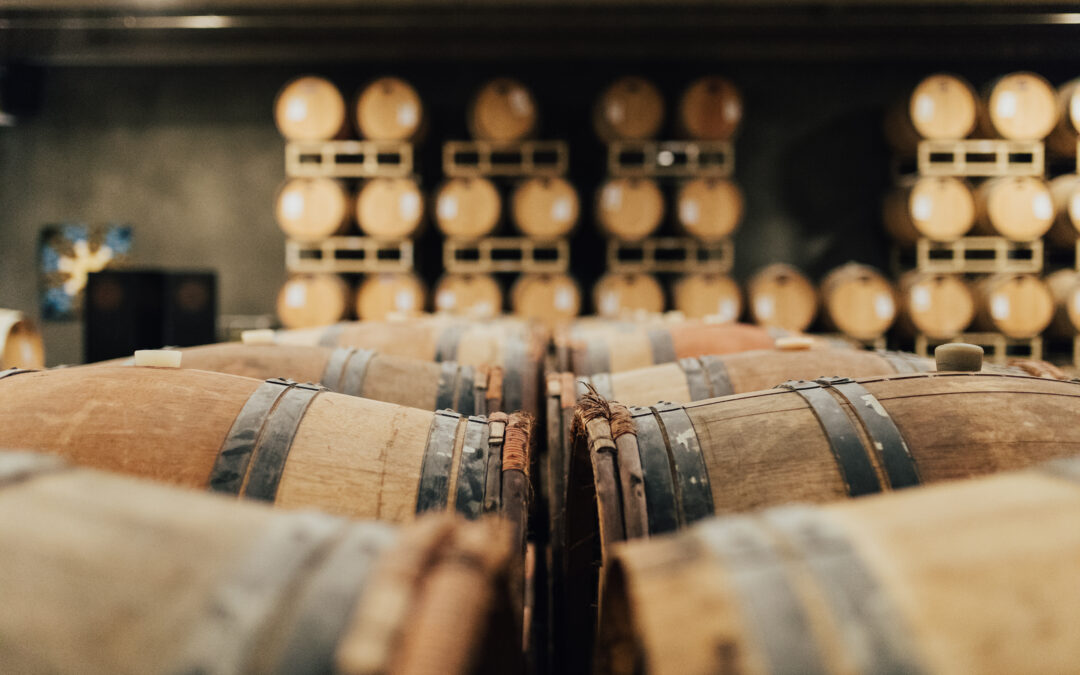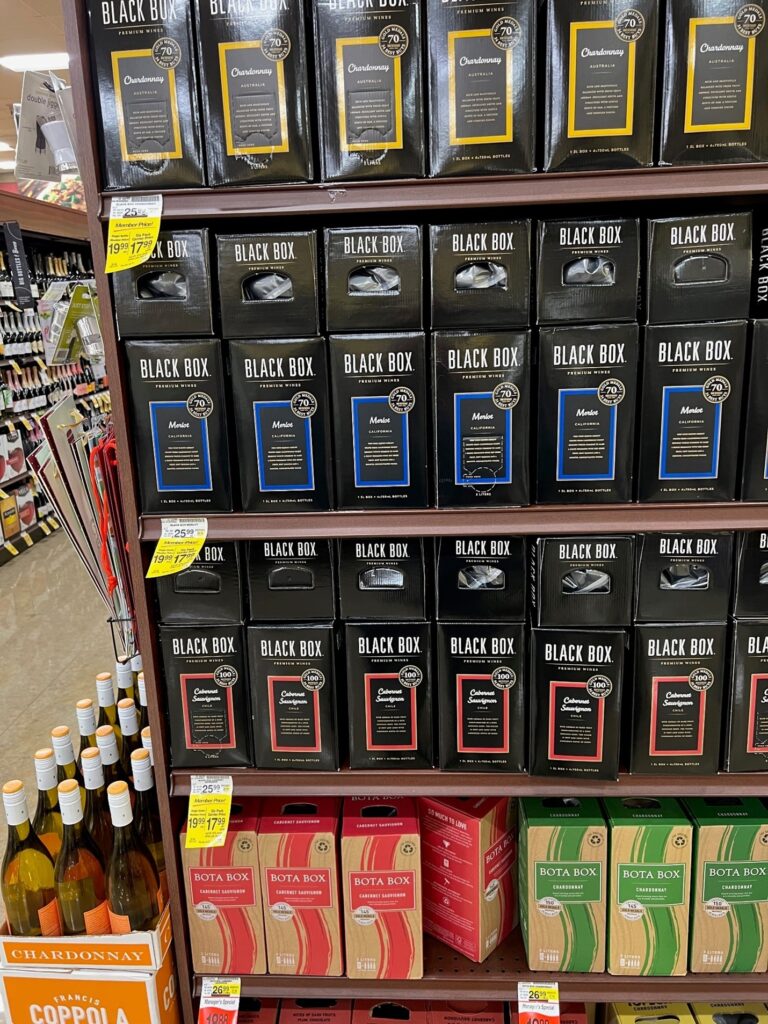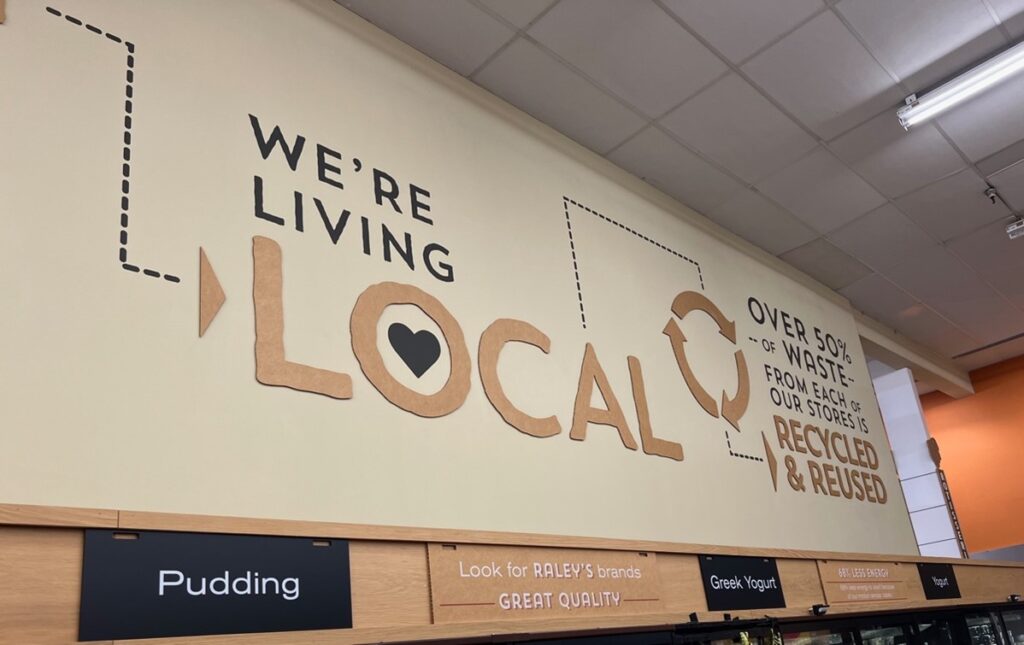MONDAY, MARCH 18, 2024. BY STUART SPENCER, LODI WINEGRAPE COMMISSION.
According to the Gomberg Fredrikson Report, nearly 68 million gallons of foreign bulk wine was imported by California wineries in 2022. And no one is talking about it. Over the past couple of months, countless industry presentations have discussed the slowing wine market, the anti-alcohol movement, how young people aren’t drinking wine, and the excess inventory of California-grown wine. We’ve been told that potentially 400,000 tons of grapes were left on the vine last harvest. Growers have been told they need to remove thousands of vineyard acres to balance supply with demand. But no one is mentioning that California’s largest grape buyers also imported the equivalent of 400,000 tons of grapes in 2022.
Unharvested old vine zinfandel next door to importing winery. Photo taken in February 2024 by author.
The importation of foreign bulk wine began in the late 1990s when a rapidly growing wine market looked overseas to fill demand. That trend slowed significantly in the early 2000s as California vineyard plantings exceeded demand, but began to pick back up around 2006 and has grown steadily ever since. See the table below showing the past six years of foreign bulk imported wine.
Source: Data from Gomberg, Fredrickson Reports.
CALIFORNIA GRAPE CRUSH REPORT & WINEGRAPE DEMAND
Total wine shipments (all bottled domestic and imported wine entering distribution) to the U.S. market declined in 2022 and 2023. Prior to that, the U.S. wine market had experienced 30 straight years of growth leading up to 2022. However, even as the market continued to grow over the past decade, the total CA winegrape crush and winegrape purchases from independent growers have shrunk. The table below details the total California grape crush for the past ten years. The “Purchased CA Grape Crush” reflects tons purchased from independent grape growers and eliminates winery-owned acreage. The ”5 Year Average” columns reflect a 5-year rolling average of grapes crushed and grapes purchased for wine production. As you can tell from subtracting 2023 purchase levels from 2014, California wineries have decreased grape purchases by over 500,000 tons annually over the past 10 years.
Source: California Grape Crush Report.
Some of the decrease in grape purchases can be attributed to an expansion of vintner-owned acreage, but that is minimal. Total California grapes crushed for wine production has decreased by 433,000 tons on average annually since 2014. In Crush District 11 (Lodi), where we have approximately 750 winegrowers, 89% of the grapes harvested in 2023 were from independent growers, and that number would likely have been higher if all the grapes had been harvested. In 2014, 92% of Lodi grapes came from independent growers. Statewide, in 2023, 77% of grapes came from independent growers which is down from 80% in 2014.
BULK FOREIGN IMPORTS UNDERMINE CALIFORNIA GRAPE GROWERS
Clearly, bulk and bottled imports have had a profound impact on the demand for California winegrapes. What is frustrating to growers is that many of the largest buyers of California winegrapes are also the largest importers of foreign bulk wine (see table below). This situation is exacerbated by a global oversupply of wine which allows wineries to source incredibly cheap foreign bulk wine to reduce their cost of goods sold.
Further complicating matters, and potentially incentivizing foreign bulk imports, is the federal government’s Duty Drawback program. “Drawback is the refund of Customs duties, certain Internal Revenue taxes, and certain fees that have been lawfully collected at importation.” In other words, duties paid on importing foreign bulk wine into California can be refunded by exporting similar products.
Source: Gomberg Fredrickson Report, 2022 Annual Wine Industry Review.
The decrease in demand for winegrapes has also led to a stagnation in grape pricing. Thus, many growers feel forced to increase yields in order to compensate for higher farming costs. And many older vineyards, capable of producing high-quality wine, cannot produce high enough yields to remain economically viable. Many acres of Historic Vineyard Society–registered vineyards in Lodi are unfortunately being removed this year. The table below, produced by American Ag Credit, shows the average price per ton by California crush districts in inflation-adjusted dollars indexed to 2013.
Source: Terrain, Winescape, A publication by American Ag Credit, Spring 2024.
AMERICAN WINE
Where is all this imported bulk wine ending up? Much of it is in plain sight on the grocery store shelves, labeled as “American” wine. Federal TTB (Tax & Trade Bureau) regulations allow for up to 25% foreign (non-US) wine to be blended with California wine and legally labeled “American.” Additionally, a lot of the imported foreign bulk wine is showing up in traditional California brands. Some of the wines are labeled American, while others indicate they are a product of Chile, Australia, Italy, and New Zealand. And in many cases, you must look very carefully to find the country of origin. Unfortunately, many of these foreign-sourced wines are mixed in on the shelf with the domestically sourced wines so the consumer is likely not even aware of where their wine was grown. Or they may be inadvertently purchasing a wine believing they are supporting California farmers.
Sutter Home (Trinchero) Australian Pinot Grigio at Safeway. Photo taken by author.
Black Box (Gallo). Non-Vintage Chilean Cabernet next to California Cabernet Sauvignon. And quite amazingly they have the same flavor description of “rich aromas of dark fruit…” Photo taken by author.
End cap display at the Lodi Safeway grocery store. Top shelf: Black Box (Gallo) Australian Chardonnay; middle shelf in blue: Black Box (Gallo) California Merlot; middle shelf in red: Black Box (Gallo) Chilean Merlot; bottom shelf in red: Bota Box (Delicato) American Cabernet Sauvignon; bottom shelf in green: Bota Box (Delicato) American Chardonnay. Photo taken by author.
Fetzer Valley Oaks American Cabernet Sauvignon at Safeway. Photo taken by author.
Beringer Main & Vine (The Wine Group) American Merlot at Safeway. Photo taken by author.
Retailers – Living Local, Buying Foreign
Every retailer and grocery store I visited over the past few months had their shelves stocked with foreign-sourced bulk imports. Target, Safeway, Whole Foods, Raley’s, and independent grocers all had “American” wines intermixed with their domestic counterparts. Lodi is California’s largest producer of Cabernet Sauvignon, Chardonnay, Sauvignon Blanc, Merlot, and many more winegrape varieties. Even in the heart of Lodi wine country, our grocery store shelves are stocked with foreign bulk wine. These grocery stores actually depend upon the success of local winegrowers and the adjacent industries to shop and support their stores. And all the while so many retailers proudly proclaim their support for our local farms.
Lodi grocery store with large signage showing “We’re Living Local.”
The level of hypocrisy is outstanding! In no world does it make sense to ship bulk wine from across the globe to sit on a shelf in Lodi while thousands of tons of California winegrapes go unharvested and local growers remove family vineyards and take out loans to pay their farming bills. This is a call to our California retailers, grocery stores, and restaurants to start paying attention. “Living Local”, “Farm to Fork”, and “Doing what is right for our community” need to be more than just marketing slogans.
Community – The Foundation of Sustainability
Over the past 20 years the California wine industry has embraced sustainability, but importing millions of gallons of cheap foreign bulk wine to save a dollar is not in the true spirit of sustainability. It is the opposite. It is profiting at your community’s expense. And it is time that California wine’s dirty secret came out of the dark! If we are serious about true sustainability and the long-term health of our industry, we need to put a stop to this cheap foreign bulk wine importing and proudly invest in California-grown, produced, and bottled wines.
At countless industry presentations that ignored this subject, we were told that young consumers desire transparency, authenticity, and quality. Cheap foreign bulk wine that hides its origin in the fine print of a back label is not transparent or authentic and undermines the California winegrowers who are the heart and soul of our industry.
Have something interesting to say? Consider writing a guest blog article!
To subscribe to the Coffee Shop Blog, send an email to stephanie@lodiwine.com with the subject “blog subscribe.”
To join the Lodi Growers email list, send an email to stephanie@lodiwine.com with the subject “grower email subscribe.”
To receive Lodi Grower news and event promotions by mail, send your contact information to stephanie@lodiwine.com or call 209.367.4727.
For more information on the wines of Lodi, visit the Lodi Winegrape Commission’s consumer website, lodiwine.com.
For more information on the LODI RULES Sustainable Winegrowing Program, visit lodigrowers.com/standards or lodirules.org.













